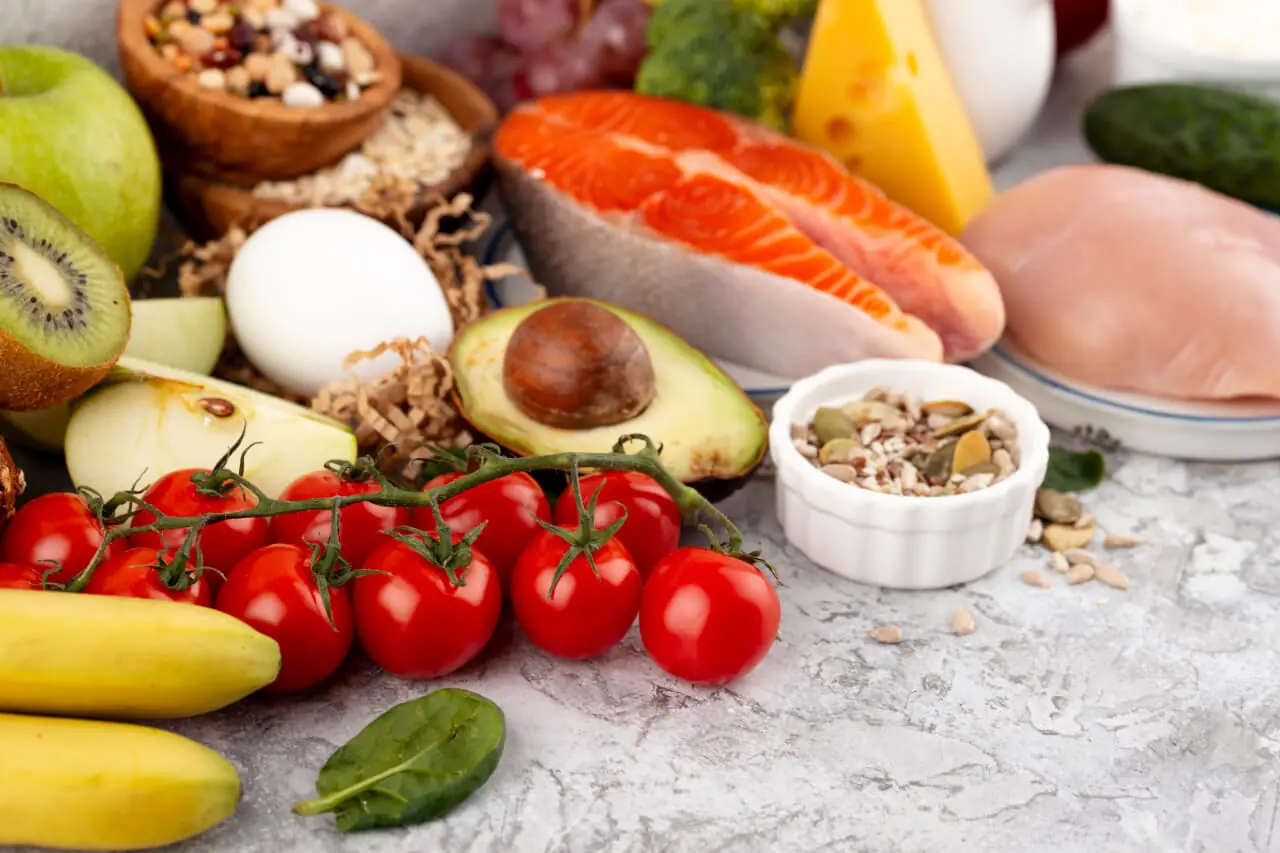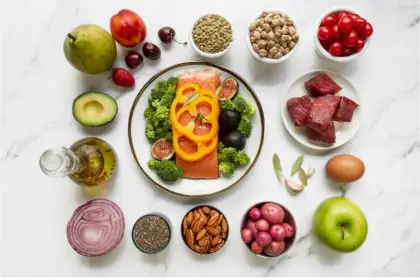Triglycerides, a type of fat found in your blood, play a crucial role in storing energy and providing warmth.
However, when their levels exceed the recommended range.
They can put you at an increased risk of developing heart disease, stroke, and other health complications.
Fortunately, making informed dietary choices can significantly impact your triglyceride levels.
By incorporating certain power-packed foods into your meals.
You can effectively lower these numbers and safeguard your overall well-being.
Here are some of the things that can cause triglyceride levels to rise
- Eating a diet high in saturated and trans fats.
- Saturated and trans fats are found in many processed foods, such as fried foods, fast food, and packaged snacks.
- Being overweight or obese.
- Excess body fat can increase the production of triglycerides.
- Having type 2 diabetes.
- People with type 2 diabetes often have high triglyceride levels due to insulin resistance.
- Drinking alcohol excessively.
- Alcohol can interfere with the body’s ability to remove triglycerides from the blood.
- Certain medications.
- Some medications, such as corticosteroids and beta-blockers, can raise triglyceride levels.
Why are Triglyceride Levels Important for Health?
Triglycerides are a type of fat found in your blood.
They are made from the food you eat and the body stores excess energy as triglycerides.
Levels of triglycerides over 150 mg/dL (milligrams per deciliter) are considered high.
When your triglyceride levels are high, it can increase your risk of developing heart disease, stroke, and other health problems.
Here are some of the reasons why triglyceride levels are important for health:
1. They can contribute to plaque buildup in the arteries
Plaque is a thick, hard substance that can build up on the walls of your arteries.
This can narrow the arteries and make it harder for blood to flow.
High triglyceride levels can also increase the risk of blood clots, which can further block the arteries.
2. They can raise blood pressure
High blood pressure is a major risk factor for heart disease and stroke.
Triglycerides can contribute to high blood pressure by making the blood more viscous (thicker).
This makes it harder for the heart to pump blood and can put stress on the arteries.
They can increase the risk of pancreatitis.
Pancreatitis is an inflammation of the pancreas, a gland that helps with digestion.
High triglyceride levels can contribute to pancreatitis by causing the pancreas to release digestive enzymes into the bloodstream.
3. They can increase the risk of fatty liver disease
Fatty liver disease is a condition in which too much fat builds up in the liver.
Triglycerides can contribute to fatty liver disease by making it harder for the liver to remove fat from the blood.
4. They can be a sign of other health problems
High triglyceride levels can be a sign of other health problems, such as obesity, type 2 diabetes, and metabolic syndrome.
Embark on a culinary journey with us as we unveil the 10 top foods that can help you achieve healthy triglyceride levels.
1. Soy protein
Soy protein is a plant-based protein that contains isoflavones.
Compounds that have been shown to reduce triglycerides and cholesterol.
Soy protein also provides fiber and antioxidants that can benefit your overall health.
You can get soy protein from foods like soybeans, edamame, tofu, tempeh, and soy milk.
Aim for at least 25 grams of soy protein per day for the best results.
2. Fatty fish
Fatty fish like salmon, sardines, mackerel, and herring are rich in omega-3 fatty acids, which are essential for your heart and brain health.
Omega-3s can lower your triglycerides by reducing inflammation, improving blood flow, and preventing the liver from producing excess triglycerides.
Try to eat fatty fish at least twice a week, or take a fish oil or krill oil supplement if you don’t like fish.
3. Avocado
Avocado is a delicious fruit that contains healthy monounsaturated fats, which can help lower your triglycerides and cholesterol.
Avocado also has fiber, potassium, vitamin E, and other nutrients that can support your cardiovascular system.
You can enjoy avocado as a snack, in salads, in smoothies, or as a spread on toast or sandwiches.
One avocado a day can make a difference in your triglyceride levels.
4. Oats
Oats are a whole grain that can help lower your triglycerides by providing soluble fiber.
Which binds to bile acids in your intestines and prevents them from being reabsorbed into your bloodstream.
This reduces the amount of cholesterol and triglycerides that your liver has to produce.
Oats also have beta-glucan, a type of fiber that can lower your blood sugar and insulin levels.
Which can also affect your triglyceride levels.
Start your day with a bowl of oatmeal, or add oats to your baked goods, granola, or energy bars.
5. Nuts and seeds
Nuts and seeds are another source of healthy fats.
Especially omega-3s and omega-6s, which can lower your triglycerides and cholesterol.
Nuts and seeds also have protein, fiber, minerals, and antioxidants that can improve your overall health.
Some of the best nuts and seeds for lowering triglycerides are walnuts, almonds, pistachios, peanuts, flaxseeds, and chia seeds.
You can eat them raw, roasted, or in butter form, or add them to your salads, yogurt, or oatmeal.
A handful of nuts or seeds a day can keep your triglycerides at bay.
6. Olive oil
Olive oil is one of the main components of the Mediterranean diet, which is known for its benefits for heart health.
Olive oil is a monounsaturated fat that can lower your triglycerides and cholesterol, as well as your blood pressure and inflammation.
Olive oil also has polyphenols, antioxidants that can protect your blood vessels from damage.
Use olive oil for cooking, dressing, or dipping, but don’t overdo it, as it is still high in calories.
One to two tablespoons of olive oil a day is enough to reap its benefits.
7. Berries
Berries are fruits that are low in sugar and high in antioxidants, which can help lower your triglycerides and cholesterol.
Berries also have pectin, a type of soluble fiber that can lower your blood sugar and insulin levels, which can also affect your triglyceride levels.
Some of the best berries for lowering triglycerides are raspberries, blueberries, strawberries, blackberries, and cranberries.
You can eat them fresh, frozen, or dried, or add them to your smoothies, yogurt, or oatmeal.
A cup of berries a day can keep your triglycerides away.
8. Garlic
Garlic is a herb that has been used for centuries for its medicinal properties.
Garlic can lower your triglycerides and cholesterol by inhibiting the enzymes that produce them in your liver.
Garlic also has allicin, a compound that can lower your blood pressure and inflammation, as well as prevent blood clots and plaque formation in your arteries.
You can eat garlic raw, cooked, or in supplement form.
But be aware that it can cause bad breath and stomach upset in some people.
One to two cloves of garlic a day can help lower your triglycerides.
9. Cruciferous Vegetables
Cauliflower, cabbage, broccoli, Brussels sprouts, bok choy, and kale.
They belong to the Brassicaceae family and are rich in compounds like glucosinolate and isothiocyanate.
These elements have been associated with reducing oxidative stress and potentially lowering the risk of cancer.
Animal studies indicate a significant reduction in triglyceride levels and improvements in metabolic health.
While further human research is warranted, incorporating cruciferous vegetables into your diet holds promise for enhancing blood fat metabolism and overall metabolic health.
10. Coconut Oil
Despite its saturated fat content, coconut oil is being explored for potential protective effects against heart disease.
With a mixed fatty acid profile, including saturated fats and medium-chain triglycerides (MCTs).
Coconut oil has shown comparable effects to olive oil in increasing HDL (good) cholesterol and lowering LDL (bad) cholesterol.
A 2020 clinical trial using tea biscuits made with coconut oil demonstrated a remarkable 60% reduction in triglyceride levels after a meal, attributed to the MCT fatty acid profile.
Studies suggest that MCT oil may improve fasting and post-meal triglyceride levels.
Further research is essential to fully understand the positive health impacts of coconut oil.
How do high triglyceride levels contribute to heart disease?
If you have high triglyceride levels, there are a few things you can do to lower them.
These include:
Eating a healthy diet: Focus on eating plenty of fruits, vegetables, and whole grains.
Choose lean protein sources and limit your intake of saturated and trans fats.
Getting regular exercise: Aim for at least 30 minutes of moderate-intensity exercise most days of the week.
Losing weight if you are overweight or obese: Losing even a small amount of weight can help lower triglyceride levels.
Quitting smoking: Smoking can increase triglyceride levels.
Drinking alcohol in moderation: Excessive alcohol consumption can raise triglyceride levels.
Conclusion
Triglycerides are a type of fat that can affect your heart health if they are too high.
You can lower your triglyceride levels by eating a balanced diet that includes foods that are rich in fiber, healthy fats, protein, and antioxidants.
These foods can also improve your overall health and well-being.
Remember to also exercise regularly, limit your alcohol intake, and manage your stress levels, as these factors can also influence your triglyceride levels.
By making these lifestyle changes, you can lower your triglyceride levels and protect your heart health.
FAQs
Why are high triglyceride levels a concern for health?
High triglyceride levels are associated with an increased risk of heart disease and other cardiovascular problems.
Elevated triglycerides can contribute to the buildup of plaque in arteries, leading to atherosclerosis and raising the risk of heart attacks and strokes.
How can diet help in lowering triglyceride levels?
Certain foods can positively impact triglyceride levels.
A heart-healthy diet that includes foods rich in omega-3 fatty acids, fiber, and antioxidants has been shown to lower triglycerides.
These foods help regulate lipid levels and promote overall cardiovascular health.
What role do omega-3 fatty acids play in reducing triglycerides?
Omega-3 fatty acids, found in fatty fish like salmon, flaxseeds, and walnuts, can help lower triglyceride levels.
These essential fatty acids have anti-inflammatory properties and support the balance of blood lipids, contributing to a healthier cardiovascular profile.
Are all fats bad for triglyceride levels?
Not all fats are harmful.
Healthy fats, such as those found in avocados, olive oil, and nuts, can actually help lower triglyceride levels.
It’s crucial to focus on replacing saturated and trans fats with these healthier alternatives to support heart health.
Can fruits help in reducing triglycerides?
Yes, certain fruits are beneficial for lowering triglyceride levels.
Berries, citrus fruits, and apples contain antioxidants and soluble fiber that can help regulate blood lipid levels.
Including a variety of fruits in your diet supports overall cardiovascular health.
How can lifestyle changes complement a diet for lowering triglycerides?
Alongside a healthy diet, lifestyle changes are essential.
Regular physical activity, maintaining a healthy weight, and limiting alcohol intake can further contribute to lowering triglycerides.
Combining these lifestyle modifications with a nutritious diet enhances overall cardiovascular well-being.





